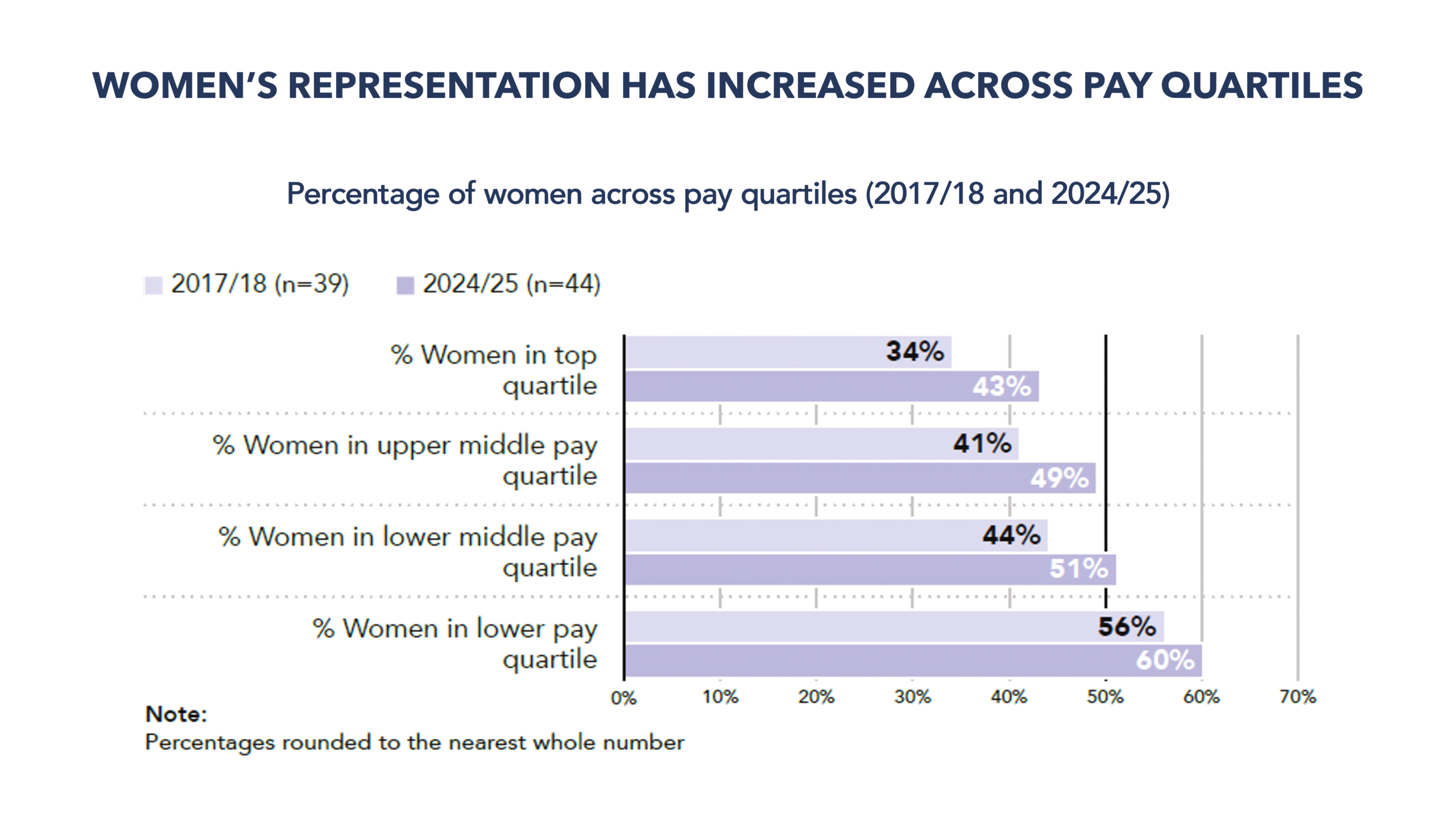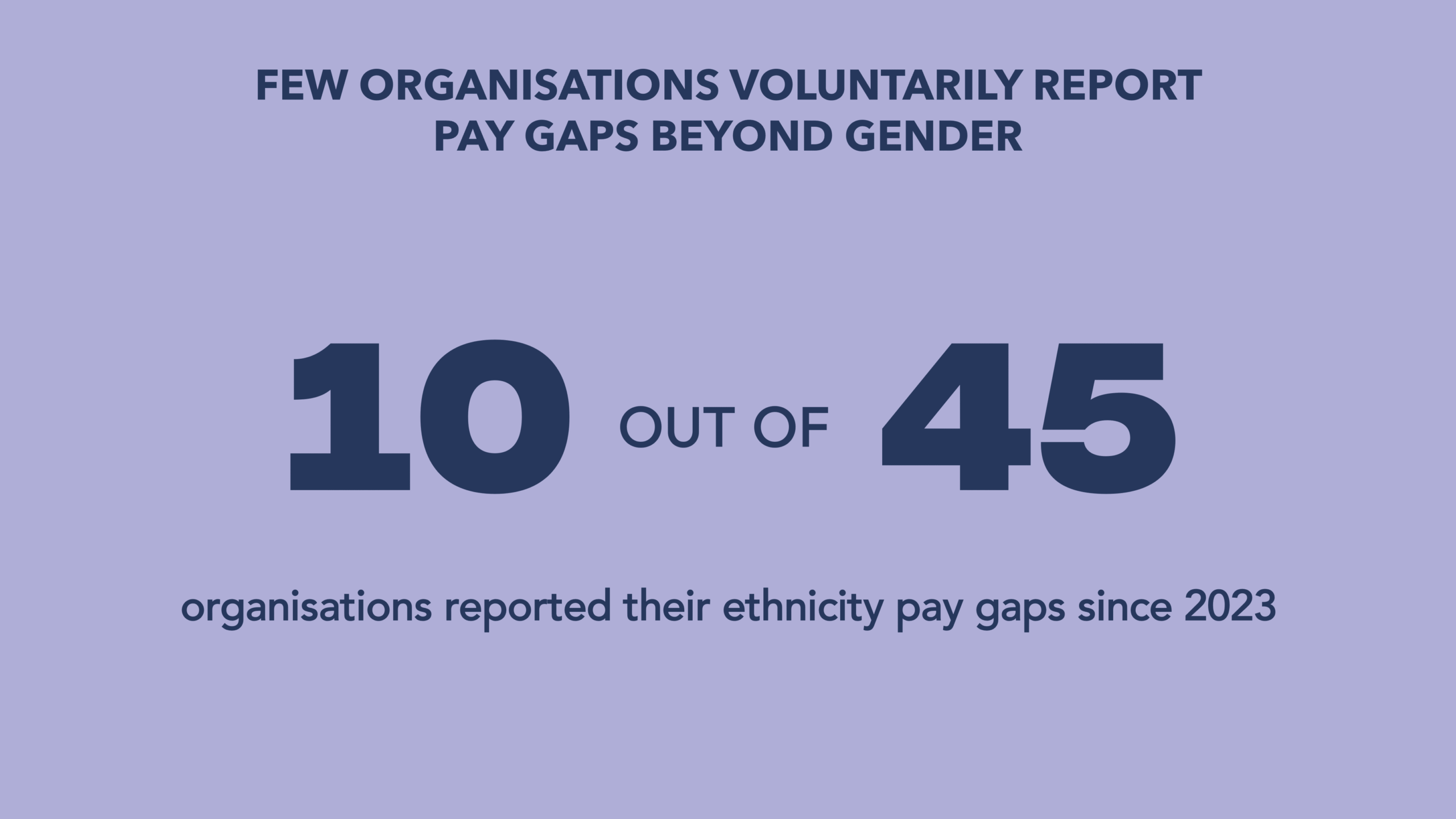Closing the Gap?
2025 Analysis of Gender Pay Gaps in UK-based Organisations Active in Global Health
Image: A Man’s World, UK, 2022, Seldjan Behari
Groundbreaking new analysis shows gender pay gaps are smaller under women’s leadership
This report presents evidence on gender pay gaps across 45 organisations active in global health. We show that over the past eight years organisations in the global health sector led by women CEOs have smaller median gender pay gaps on average than organisations led by men. These findings suggest that organisations with women leaders may be more likely to have processes in place to address structural pay inequalities.
The analysis draws on data from the United Kingdom (UK), where employers with 250 or more staff have been legally required since 2017 to publish annual gender pay gap figures. As noted in our 2023 report, The Space Between, this requirement has led to an unprecedented level of transparency around pay gaps in the UK. Despite this progress, the gender pay gap remains a defining feature of most economies, underscoring the need for other countries to adopt similar mandatory reporting measures.
Key Findings
Methods
We collected and analysed data from the UK Government Gender Pay Gap Service website for organisations in the health sector. Organisations are required to use the same methods to measure and report gender pay gaps, facilitating analysis and comparison of data. We conducted regression analysis by combining gender pay gap data with data on the gender of the CEOs from 2018 to 2025.
We utilise pay gap data in two forms: median (the middle value of a set of numbers) and mean (the average value of a set of numbers). The median figure is useful in showing the ‘middle’ pay gap and dismissing major outliers that can skew results. At the same time, we take a feminist approach to our analysis by including outliers (organisations with very large pay gaps in favour of men, and in some cases, of women) by additionally presenting the mean.
Our Sample
Of the 45 organisations included within our sample, 41 were required to report their gender pay gap to the UK government in 2024/25. Of the four remaining organisations, three organisations (International Planned Parenthood Federation, Plan International and World Vision) chose to report voluntarily in 2024/25 and earlier, while one organisation (Médecins Sans Frontières) has reported in some previous years voluntarily.
In health research and policy, who leads determines whose knowledge counts and whose priorities shape the agenda. When women lead, accountability and inclusion follow. Global 50/50’s evidence linking women’s leadership to smaller pay gaps confirms what we see in practice: decolonising global health begins with representation, and inclusive leadership builds fairer, more effective systems for all.
We know that what gets measured gets prioritised. The 2025 Global 50/50 Gender Pay Gap Report reminds us that transparency is power: when organisations report, analyse, and act on gender pay gaps, they take a stand for fairness. Data must be the starting point for policies that dismantle barriers to women’s leadership and drive genuine gender justice at work.
The 2025 Global Health 50/50 Gender Pay Gap Report confirms what we see across our programs: when women lead, pay gaps shrink and organizations perform better. Pay equity isn’t a side project—it’s a leadership choice. Investing in women leaders and the ecosystems around them builds cultures where everyone can thrive.
Women in Global Health has 65 chapters in 60 countries in all six WHO regions of the world. In too few of these do governments make gender pay gap reporting mandatory. This new report from Global 50/50 demonstrates that mandatory reporting helps to close the gap, and it provides invaluable guidance and resources that can equip organisations to close their pay gaps. It is time to make pay transparency the norm, not the exception.
Take action
Explore our collection of practical tools, guidance and research, specially curated to help organisations take steps to narrow gender and other pay gaps.
Image: Blue House, India, 2020, Sanjay Joshi






